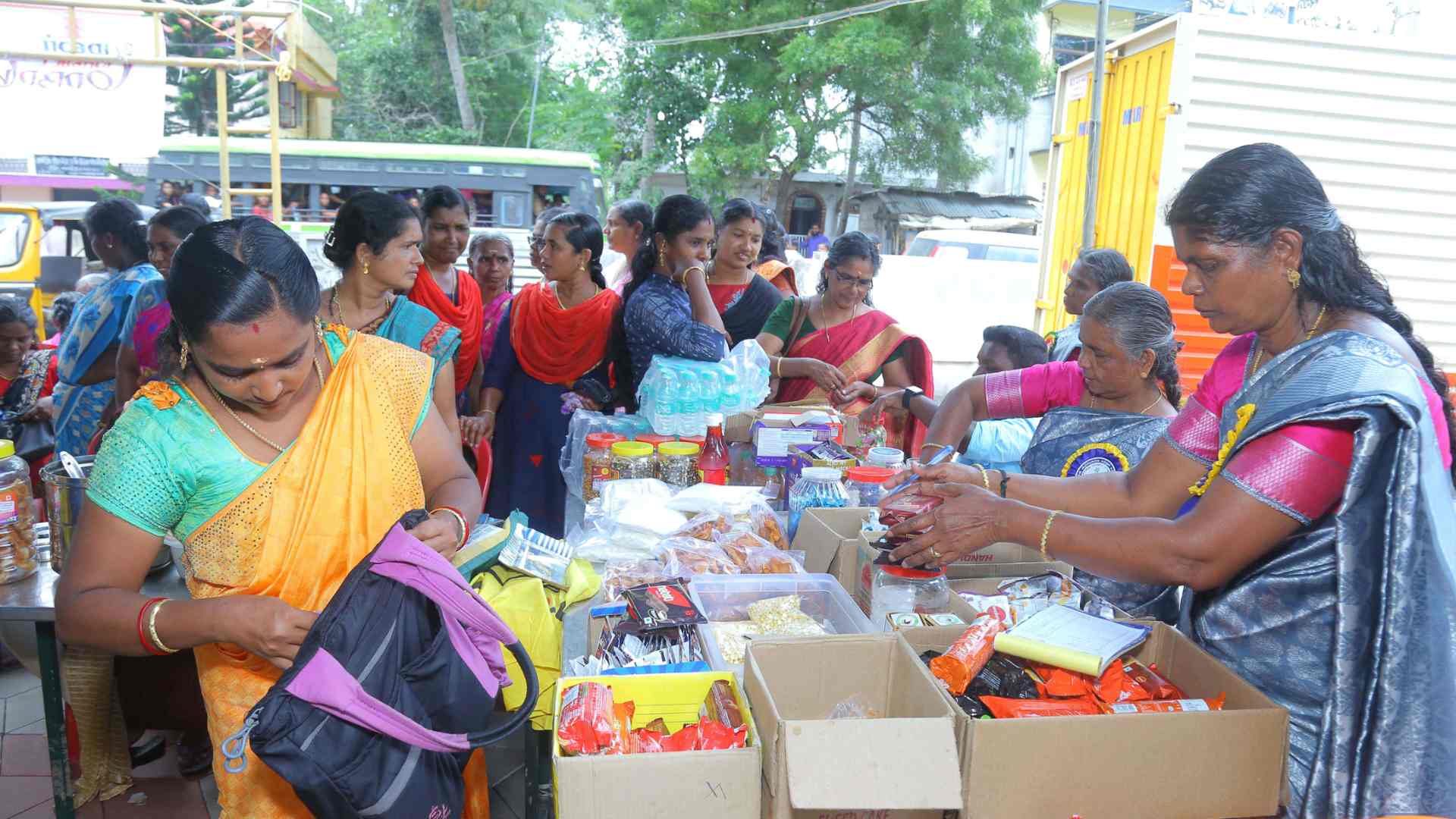Random Reflections
Economic empowerment is essential for women to participate in different actions and struggles. There are many examples in India where women have mobilised themselves economically to improve their life and also participate in collective action. A few important examples come to mind. 
MALAR
The first is MALAR; Mahalir (women) Association for Literacy Awareness and Rights is a federation of Self-Help Groups (SHGS) in Kanyakumari district of Tamil Nadu. It is a 27 years old women’s organisation, which does not take foreign funds but has become a self-reliant organisation through a membership fee, savings, and using the internet. Women today can avail credit to the tune of Rs 5 lakhs (1/2 million Indian Rupee or ($6000)) without providing any security and use it for the education of their children, housing and economic activities like a small business.
They have 75 full-time staff, 350 part-time staff, 7 offices, and training centres that are totally self-reliant. Women meet every week, discuss various issues and participate in struggles for rights joining with other democratic movements and have participated in local self-government elections successfully and have worked for the upliftment of people in the area.
At present, they have 2000 self-help groups with an average of 20 members covering 40,000 families in a district which has around 4,83,000 families. Now they have member-owned companies, a farmer’s producer organisation, and a small bank called the Nidhi Company; all these function democratically through elected leaders who are changed periodically. They are networked to Vikalp Sangam (Collective of alternatives). For more, visit: http://www.kkmalar.org/web/
Kudumbashree, Kerala, India
The Left Front government in the State of Kerala has mobilised women into neighbourhood groups, a modified version of self-help groups from 1997 onwards. The key programmes in economic empowerment are:
—► Micro-Finance
—► Collective Farming
—► Livestock Farming
—► Micro Enterprises
—► Market Development
—► Value Chain Based Strategies
—► Collectives and Consortiums
In the States’ annual expenditure budget, 30% is allotted to local self-governments and every local self-government spends 10% of it exclusively for the development of women.
Women are encouraged to get into income-generation activities. Technology and marketing support are provided by the government (for more, visit: www.kudumbashree.org). This has demonstrated how a government which cares for women can support them economically and improve their families. The ASRAYA programme which is to target the poorest among the poor is a great example.
TIMBAKTU Collective
Timbaktu Collective is a collective of farmers and women in a drought-prone area of Andhra Pradesh. Here through Co-operatives farmers including women got into organic farming, cattle rearing, goat rearing, chicken rearing, honey collection etc from 1990 onwards which has empowered them economically. They have a member-owned marketing federation. Women are involved in local collective action and nearly 50,000 families are working together to provide an alternative economic development model. This Collective is part of Vikalp Sangam which has many such models working in India (See https://timbaktu.org/).
NREGA Workers Union
Mazdoor Kisan Shakti Sangathan (MKSS – Worker, farmer liberation front) which functions in Rajasthan, India has mobilised poorest women who work for 100 days in the government-run programme Called Mahatma Gandhi National Rural Employment Guarantee Scheme. This has helped women to work in a collective, get employment for at least 100 days in a year, save money, have credit groups and participate in political struggles. They prepare proposals for the Panchayats as per government guidelines, and ensure that everyone registered gets 100 days work. They conduct audits and help needy groups with credit. They are also networked with Vikalp Sangam. (See www.mkssindia.org)
In all of the above experiments, there is overall development in the families, in the education of the children, health care and also participation in community activities.
There are many such models, which may be small but are providing alternatives for democratic participation and local economic models. These are important to provide political and economic alternatives instead of One Nation, One Religion, One Election. There are more groups like PROCHESTA in Assam, North East Network, SAMAM in Pondicherry, VELUGU in Andhra Pradesh, SAMATA in Madhya Pradesh, and the pioneer, SEWA started in Ahmedabad which has spread to many states now. These groups have to come together, share experiences and provide alternatives while resisting communalism and authoritarian government and work for peace, solidarity and brotherhood. Without that, they will disappear over a period of time and the women will be blamed. There are similar models across the world from which we can learn and improve the functioning of these groups and also have collaborations. Latin American countries have many experiments to learn from. The biggest and well-known Bangladesh Grameen Bank initiated by Prof. Mohammad Yunus has been taken over by the government, and it is no more seen as an initiative of the women’s movement. The World Bank is funding many groups as microfinance groups for making a profit out of loans to the poor. They don’t empower women and keep them away from getting politicised. The need of the hour is to identify good models, and network with not just the state within the country and all over the globe.
Thomas Franco is the former General Secretary of All India Bank Officers’ Confederation and a Steering Committee Member at the Global Labour University.
Centre for Financial Accountability is now on Telegram. Click here to join our Telegram channel and stay tuned to the latest updates and insights on the economy and finance.

